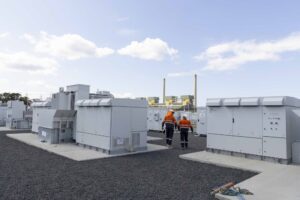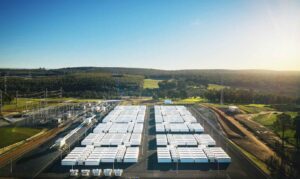The New South Wales government and the Australian Renewable Energy Agency have thrown $15 million into a new trial for demand management, extending the push towards smarter ways of dealing with demand peaks further across the National Electricity Market.
NSW will team with the Australian Energy Market Operator and ARENA to seek up to 70MW of demand management capacity, adding to the 100MW of demand management capacity being sought in a separate trial funded by ARENA.
The initiative is looking for alternatives to building new “peaking” or baseload power stations and will look at options such as paying users – household and business – to switch off appliances or machines, or load shift – in exchange for payments.
That, they reason, is smarter, cleaner, and cheaper than having to force outages on consumers, such as happened to the Tomago smelter in February, when the grid is unable to cope with soaring demand and equipment failure.
And it is also more reliable. The NSW fossil fuel fleet found itself particularly vulnerable in the midst of the heat wave last summer, with more than 2 gigawatts of fossil fuel capacity became unavailable in February when outages were imposed on Tomago.
More than 1GW of capacity was lost when the Liddell coal fired power station had two units closed, the Vales Point coal generator had to reduce capacity because of temperature issues, and the two biggest gas generators, Talawarra and Colongra, also failed spectacularly and unexpectedly (see graph above).
The demand management scheme – a response by governments and institutions frustrated by the refusal of the main energy market rule maker to encourage such initiatives – will be focused on exactly those type of issues, looking to reduce demand for electricity on extremely hot days or to reduce unplanned outages on the electricity grid.
“This is fantastic news, and demonstrates that momentum is building in Australia’s transition to a 21st century energy system,” said Luke Menzel, CEO of the Energy Efficiency Council, the peak body for energy efficiency and demand response experts.
“The fundamentals of demand response are simple – working with consumers to voluntarily move their energy use from periods of high demand (or low supply), to times when supply is plentiful,” said Luke Menzel.
“Where demand response gets exciting is when you can do it quickly, and at a scale. The technology now exists for sophisticated and substantial demand response, enabled by aggregators that combine many different sites together into ‘portfolios’ that provide flexible, secure and stable demand response.
Menzel said the country is emerging from a long period where tools like demand response were left in the toolbox, despite the fact that they can bring down costs and improve reliability. “That has contributed to skyrocketing costs for energy users, and reduced system security.”
ARENA chief executive officer Ivor Frischknecht said additional NSW funding meant the program could grow by half. “This will provide proof of concept for how innovative and flexible demand side resources can help provide security and reliability,” he said.
NSW and ARENA are sharing the costs of the $15 million program, while ARENA is paying the $23 million for Victoria and NSW.
Australian Energy Market Operator (AEMO) chief executive Audrey Zibelman said such initiatives would help the electricity system deal with high demand as it moves past the need for expensive fossil fuel plants.
She has argued strongly for smarter ways to deal with the system, and for more input on rule making. Demand management incentives have been recommended for years, but fiercely resisted by the fossil fuel lobby, along with other rules that would encourage energy efficiency and battery storage.
Update: The funding round is will close at 5pm AEST on 17 July 2017. Key funding documents – including the funding announcement and funding agreement – will be available on ARENA’s website.







